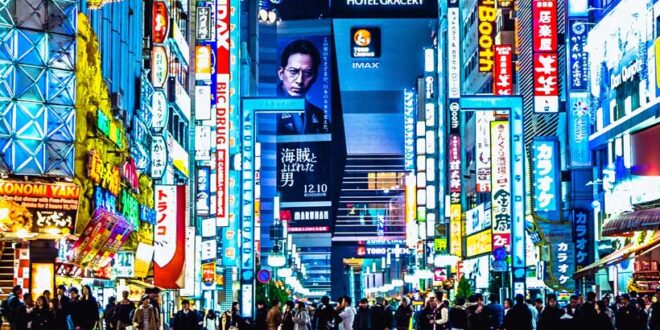Syed Rizvi
Japan has been an intriguing case study in the scope of macroeconomic policymaking. Since the burst of Japan’s economic bubble in the early 1990s, inflation has been frustratingly low, and growth has been modest at best. In 2021, Japan’s inflation rate stood at -0.174%. In the same period, the United States reported an increase in its Consumer Price Index (CPI) of a record 6.8%. It is not unusual, however, to a seasoned economist since Japan’s inflation has occasionally seen the green light in the past three decades. Despite aggressive policies of the Bank of Japan (BOJ) – from the Quantitative and Qualitative Monetary Easing (QQE) program to negative interest rates -, the inflation has not budged. And while the official target set to an ambitious 2% rate, Japan’s prices have mostly stagnated if not dropped in the past decade. This unnatural occurrence is called ‘Japanification,’ and it personifies the broader concerns of global economists regarding all advanced economies.
The statistical trend of Japan shows that the country has predominantly faced deflationary pressures since the late 80s. With an aging population and ossified consumer expectations of low prices, orthodox monetary policy tools have failed to trump deflationary guidance and kickstart economic growth. According to national statistics, Japan’s GDP growth has averaged 1.76% from 1981 to 2021. Keep in mind that Japan is the world’s 3rd largest economy – behind the United States and China. The average GDP growth in China (over the same period) stands at an astounding rate of 9.5% per annum. Evidently, while both the US and China have posted commendable growth figures and subsequent inflationary pressures in the past 30 years, Japan has been unable to counter its slumped economic model.
One of the factors is the aging population of Japan. According to census estimates, more than 29.1% of the Japanese population is aged 65 or older – the highest percentage in the world. Naturally, experts believe that due to the conservative spending patterns of the majority population, the demand has been persistently low. Contingent on low demand, the prices have consistently been below par. Thus, the general sense of low price expectation is deeply entrenched in consumer behavior. So even if the Bank of Japan lowers the interest rates virtually to zero – which it actually did – or hands out stimulus cheques, it would still not spur the spending routine as the population is inherently averse to leverage and overspending. Ultimately, the conventional monetary policy is rendered ineffective and requires creativity.
Another factor working in tandem with low demand is the collectivist culture of Japan. While advanced economies face a problem of wealth inequality due to globalization, the story of Japan is fascinatingly different. Despite being the pioneers of technological advancement, the Japanese companies have been traditionally laden with large reserves of workers that are virtually impossible to dismiss. In contrast to the United States model of ‘survival of the fittest,’ the Japanese firms have had limited flexibility in hiring and expelling workers based on performance. In fact, since the 90s, workers in Japan have mostly preferred job security over wage increases and bonuses. Recently, the Japanese incumbent prime minister, Fumio Kashida, announced a policy to incentivize companies with tax deductions up to 40% in exchange for an average wage increase of 4% in 2022. He aims to create sustainable growth and reduce economic inequality. However, his plan is causing discontent instead of elation – a surprising occurrence to a layman, not for an economist.
The reason lies in the intractable nature of inflation in Japan. According to data estimates, the average monthly wages in Japan have vacillated around ¥321101 – approximately $2800 – over the past two decades. Due to low demand pressure, businesses have largely been unprofitable which has been subsequently translated into stagnated wages. According to a survey in 2019, an estimated 65% of Japanese companies have perpetually failed to report a profit. Thus, with a rigid reserve of workers, lack of profitability, and nosediving consumer demand in the background of fierce global competition, it is not surprising that businesses prefer to keep wages fixed instead of chasing a particularly unviable tax break. The reasoning is quite simple to comprehend: if the cash handouts during the pandemic fell flat in spiking consumer spending then a wage hike wouldn’t work either. However, a wage increase would surely plunge the company financials further into the ground; all for a tax break that is already non-applicable for a loss-making enterprise.
The concept of Japanification is tricky to understand but easy to misinterpret. It doesn’t mean that Japan’s economy is headed for doom. In fact, Japan is rated above the United States in terms of employment, standard of living, and life expectancy. The concept, instead, embodies a trend of low growth and low inflation when the conventional monetary policies are not enough to manipulate the economy. It is an omen for advanced economies to prepare for the inevitable. As the US population is gradually aging (over 16% over the age of 65), the pool of workers is rapidly contracting while the state expenditure is expanding in terms of healthcare and insurance. Thus, while high inflation is the hot-button topic today across the advanced economies of the world (awaiting taper talks and policy rate hikes), it is not long before the influential central banks – like the US fed – begin to lose their sway. This nightmare haunts the economists – the Japanification that flustered Japan could soon detract other dominant economies of the world.
 Geostrategic Media Political Commentary, Analysis, Security, Defense
Geostrategic Media Political Commentary, Analysis, Security, Defense





